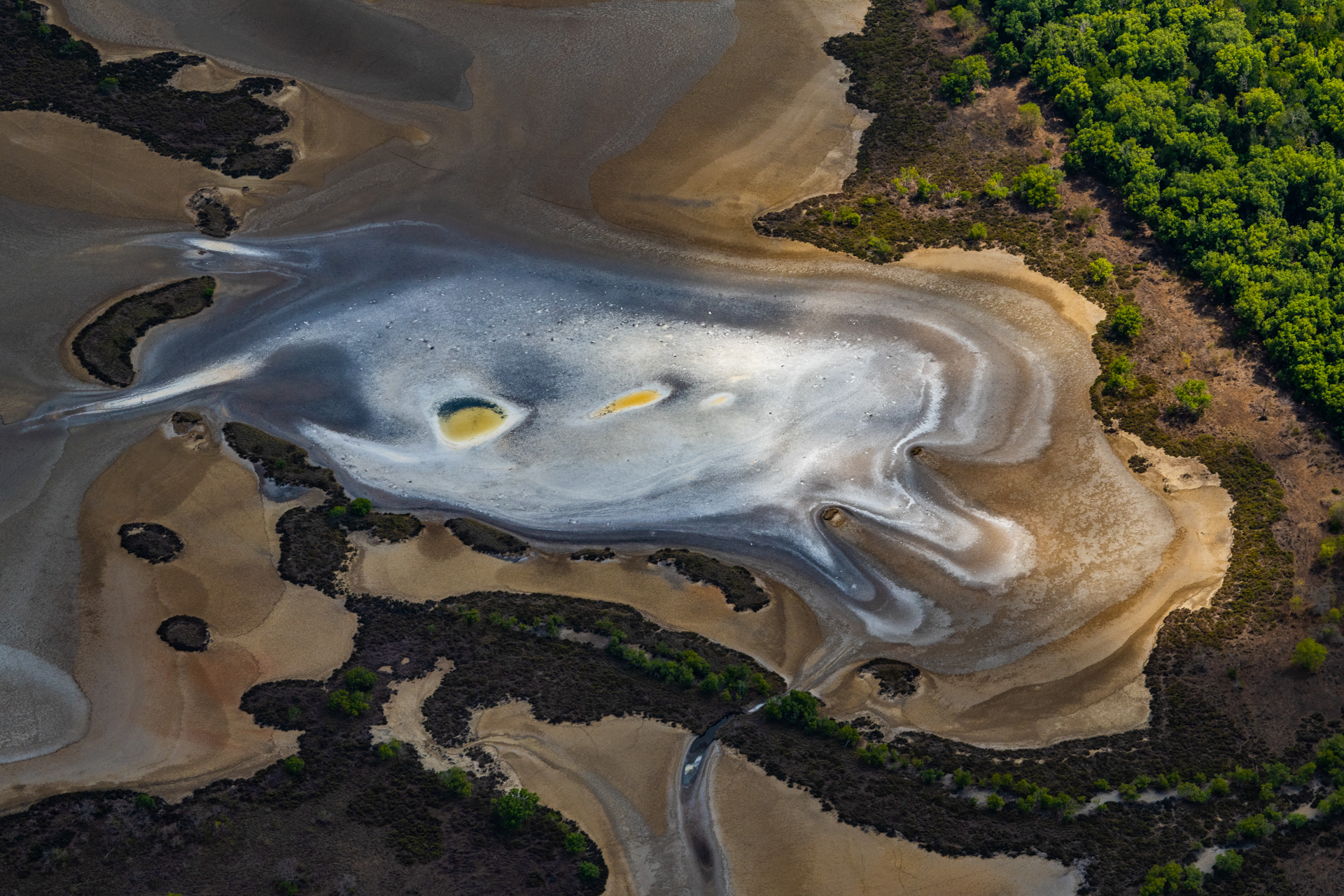|
|
Substrate (salinity)A saline soil is one that contains enough salts to adversely affect the growth of plants. Salinity in soils reduces plant's ability to extract water from the soil. While saline soils do occur naturally in Queensland, salinity can have harmful effects on agricultural production, water quality, infrastructure and the environment. Increased soil salinity has significant effects on the structure, water movement, and microbial and plant diversity of soils. Natural salinity is known as primary salinity, while secondary salinity results from human activities[2]. Quick facts
Natural areas with salinity at the soil surface include salt lakes, salt pans, salt marshes and salt flats. Natural salinity also occurs in arid areas with low rainfall, where they develop due to excessive evaporation of water[1]. A lot of soils in Queensland have naturally saline subsoils. Secondary salinity usually occurs as a result of rising groundwater tables from excessive irrigation, the use of poor quality water, a result of clearing of vegetation, seawater intrusion and point source discharge (such as from large levels of salt in industrial wastewater). Soils can develop problems with salinity through interactions with groundwater. When groundwater rises closer to the soil surface, water rises by capillary action to the surface. The water can bring salt into the root zone, and when the water evaporates, it leaves the salt behind, usually in a high concentration. Higher groundwater levels can waterlog the soil and increase salinity, reducing the productivity of agricultural land such as in the Lower Burdekin and Goondoola Basin. Dryland salinity occurs when naturally occurring salts in rocks and soil are mobilised and redistributed by water processes such as surface runoff, recharge of groundwater, subsurface lateral flows of groundwater, or groundwater discharge[3]. Dryland salinity outbreaks may be managed by improving land practices, excluding grazing on saline areas and using salt tolerant species of plants. Dryland salinity may also be caused by the exposure of naturally saline subsoils often as a result of erosion. More information and links: Salinity - Queensland Government Type of salinity and their prevention Preventing and managing salinity. References
Last updated: 19 October 2023 This page should be cited as: Department of Environment, Science and Innovation, Queensland (2023) Substrate (salinity), WetlandInfo website, accessed 18 March 2024. Available at: https://wetlandinfo.des.qld.gov.au/wetlands/ecology/components/substrate/salinity/ |

 — Department of Environment, Science and Innovation
— Department of Environment, Science and Innovation


